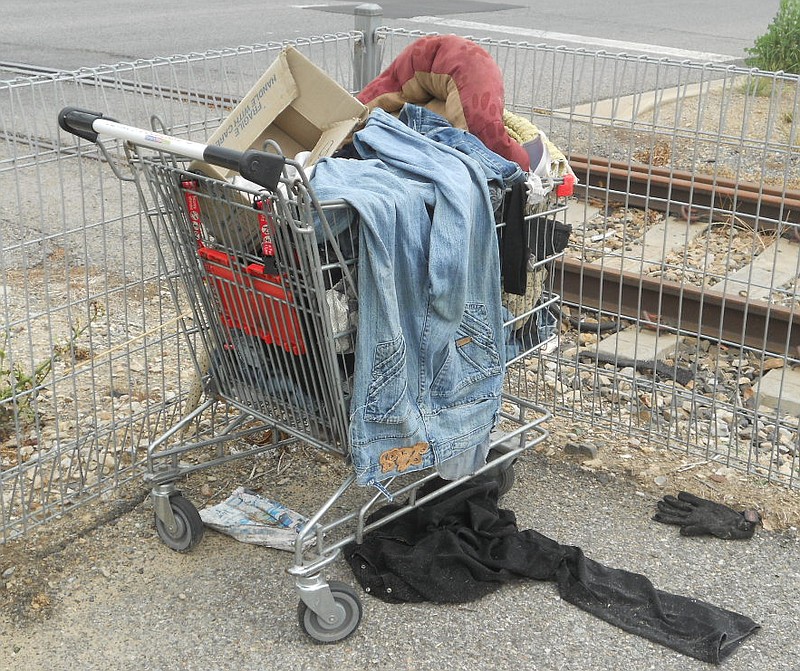Coming Together for a Common Cause
Last month I shared a story about Barry Soper, who befriended two homeless men and helped to turn their lives around. Soper, who hadn’t planned on focusing his life on the individuals experiencing homelessness, suddenly became an advocate for those who needed a voice.
Ironically, when Soper and I met, we learned that we have lots of similar history and connections. It’s people, as ourselves, that when we come together for a shared cause, we ultimately learn that we have a past with common relationships, and life experiences.
This past month I met with Dijana Beck, chief agency operations for the County of San Diego-HHSA, Central & South Regions; and Jonathan Herrera, interim housing programs manager and policy advisor for the San Diego Housing Commission. This virtual meeting allowed me to learn that both the city and county organizations, along with their funded non-profit partners, have been working closely together during the pandemic to assist homeless individuals.
Jonathan has a accountWhat both of them emphasized is that “collaboration” has become the new norm. Meaning, there is a realized value and benefit to sharing resources, connections and experiences to assist the region’s most vulnerable, unsheltered individuals obtain access to shelter housing and supportive services.
As most of us know, who live in the heart of San Diego, there has been a significant increase in homeless of all ages, backgrounds and demographics. In this issue, we share different articles about the causes and the opportunities that can change someone from existing on the streets, to having a fruitful and meaningful life.
Thankfully and hopefully, because of the shared effort of several organizations, including PATH, which operates throughout Southern California, there may be notable changes to occur this year that may significantly impact the homeless scene. This organization was also selected to operate the City of San Diego’s Coordinated Street Outreach Program.
According to Herrera, there are going to be two goals put in to practice for the homeless. First, is a non-uniformed, rapid-response dispatch team that will respond to non-emergency requests to engage unsheltered members of the community. The second function is a mobile, neighborhood based team that will provide street based case management over extended periods of time. This is being done in order to build trusting relationships that will support clients progressing towards self-sufficiency. According to Beck, HHSA will be supporting these efforts by providing access to public assistance programs and other critical county services
To further this discussion, I spoke with Hanan Scrapper, regional director for PATH, to have her provide information on this collaborative effort and the plans for 2021.

She shared with me that PATH has been operating in San Diego for the past eight years. The last couple of years, the organization has focused on individuals who are “high users” of emergency services.
During this time, they have expanded the programs and doubled the services for the regions’ chronically homeless population, as well as worked to observe barriers and bridge gaps. To again emphasize the collaborative process, their programs are now inclusive of community care coordinators, criminal justice liaisons, mental health providers, as well as both the sheriff’s department and public defenders.
The primary objectives for all of this is a person-to-person approach with a rapid response team to handle non-emergency cases; and a mobile homelessness, street-based care management team comprised of outreach specialists for each community in the City of San Diego.
PATH has been awarded a contract with the San Diego Housing Commission, through the City of San Diego to begin this program, starting with the a soft roll out planned for February. She said that based on their findings and assessments, adjustments will be made to further its effectiveness and success with the goal of providing a transparent approach, that will collect and share data on the program and its services.
Although PATH does provide housing as a part of their program, Scrapper also mentioned a strong relationship with Veteran’s Villages of San Diego, and Father Joe’s Villages, again emphasizing the benefits of shared resources and services.
It was reassuring to hear Scrapper’s enthusiasm for what’s to come, and for her to state that this is a “shift from survival to a new world” for the homeless.
We shared our own personal experiences of helping homeless people, the challenges and reasons. And we agreed that it requires special skills, compassion, and fortitude to be an outreach specialist, who will not only work with the homeless, but within the communities (businesses and residential) where they have set up residence.
I applaud this new approach to helping the homeless, because it isn’t a quick fix. Based on what I heard and learned from Dijana Beck, chief agency operations for the County of San Diego; Jonathan Herrera, interim housing programs manager and policy advisor at the San Diego Housing Commission; and Hanan Scraper, regional director for PATH, this is a work in progress, especially when you attempt to address and correct San Diego’s homeless situation today and in to the future.
Category: feature, Government, Local News, Nonprofit







